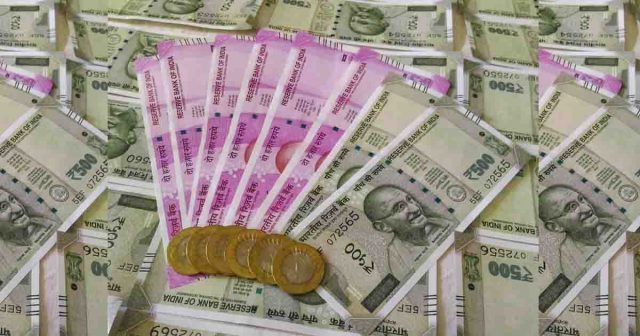News Analysis |
Indian Rupee has depreciated to its record low of 73 rupees for 1 dollar making it take a 12% plunge this year to be declared as the worst performing currency of Asia, according to Bloomberg.
Indian Reserve Bank is likely to intervene increasing the interest rate which should give reasonable support to help rupee lift up from the current dismal state but experts are divided on the matter of intervention.
India being Asia’s third-largest economy continues to grow after the tumble due to the demonetization.
Modi government is under severe criticism for having allowed the rupee to take a fall, something which is not directly in the control on government actually but since BJP did the same in 2013 when the rupee took the plunge in Congress tenure, they are getting the taste of their own medicine.
Reason for a Downward Flight of Indian Rupee
The recent surge in the crude oil prices is the major reason behind such performance of Indian currency. Crude oil is one of the largest Imports in India. A barrel of crude oil which used to cost around 60 dollars just 6 months back has now reached around 80 odd dollars/barrel.
Read more: A Cashless Society? Indian ATMs face cash shortages
Since the oil is of the necessities of growing economy such as India, the demand for dollars drastically increased as compared to Indian Rupee as the oil trade is done using the dollar as the currency of exchange. It eventually led to the worst performance of Indian Rupee in the history.
India being Asia’s third-largest economy continues to grow after the tumble due to the demonetization. But despite the current currency devaluation it has continued to grow at more than 8% in the previous quarter.
How Reserve Bank of India Plans to Stabilize the Volatility of INR
There are several instruments which the central bank of India can employ under the existing conditions. Firstly, Reserve Bank of India is expected to raise the interest rate by 25 base points. An increased interest rate encourages the foreign investment into the country thus helping strengthen the value.
Intervention continued through September, as pressure continued to mount on emerging-market currencies.
The second way to reduce the currency stress is to sell the dollars which India has around 400 billion at its disposal in the form of reserves. Another way to could be to borrow dollars from Non-Resident Indians in the form of bonds to ease the pressure. The long-term currency value for a particular country depends on two factors; the political stability and demand of a country’s goods and services abroad.
In recent years, India has successfully presented itself as a country which provides ease for business especially for foreign investors. The result of companies like Lockheed Martin and Facebook finding India to be their next destination for direct investment. Therefore the current situation is the result of extraneous factors which are out of control of the government but still, it is widely been used by the Congress and internet trolls against the Modi led BJP regime.
Read more: Lira crisis and ‘collateral currency damage’ to other countries
Debate against the Reserve Bank Intervention
Some economists believe that the Rupee should be allowed to go down corresponding to the international prices of oil as the federal intervention is counterproductive as per the precedence. The central bank moved to prevent rupee depreciation in May 2013, when Congress was holding power in center.
Defending the currency at all costs isn’t part of the brief. It is going to be a test of the government’s resolve.
Intervention continued through September, as pressure continued to mount on emerging-market currencies. Instead of showing improvement, the rupee fared worse than all other emerging-market currencies. The steps discussed above could also be interpreted by the foreign investors as the panic moves which could have a reverse effect and instead of foreign investment moving into the country, the result can also be vice versa which happened in 2013.
So far the Reserve Bank of India has allowed the rupee to follow the natural course. But the subsequent inflation is continuously increasing the pressure on the government to take substantial steps as in South Asian countries such factors play a crucial role in the result of general polls.
Read more: Soft Power Indian intellectuals call for financial aid to Pakistan
In 2016, the RBI had been given a new mandate to meet its inflation target and maintain growth. Defending the currency at all costs isn’t part of the brief. It is going to be a test of the government’s resolve.














